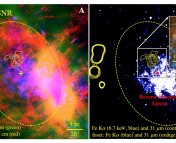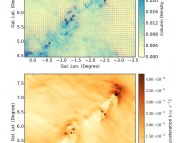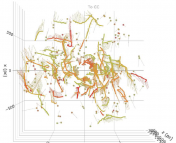Title: Ionized carbon as a tracer of the assembly of interstellar clouds
Authors: Nicola Schneider, Lars Bonne, Sylvain Bontemps, Slawa Kabanovic, Robert Simon, Volker Ossenkopf-Okada, Christof Buchbender, Juergen Stutzki, Marc Mertens, Oliver Ricken, Timea Csengeri, Alexander G.G.M. Tielens
First Author’s Institution: I. Physikalisches Institut, University of Cologne, Cologne, Germany
Status: Published in Nature Astronomy [open access]
Back in the 1960s, a team of researchers decided to stick a telescope on a plane and fly it above a large chunk of our planet’s atmosphere. Years of exciting airborne observations followed, helping us to study the atmospheres of Venus and Pluto, investigate the composition of comets, and much more. Sadly, last September, the last of these ‘flying telescopes’, NASA’s SOFIA (Stratospheric Observatory for Infrared Astronomy), touched down after its final flight. However, the wealth of data collected over its lifetime is still shedding insight on important astrophysical questions, as today’s paper proves.
Why put a telescope on a plane?!
Observational astronomy has long been plagued by the pesky presence of Earth’s atmosphere (pesky for astronomy, but vital for life). In particular, atmospheric gasses are far too good at absorbing infrared wavelengths, but these wavelengths contain plenty of useful information about stars, stellar objects, galaxies, and much more. Aside from launching a telescope a million kilometres up into space (JWST), astronomers have found that observing from the much more accessible stratosphere is sufficient to make some key observations. And so, SOFIA was born: a 2.5m reflector telescope aboard a modified Boeing-747 airplane.
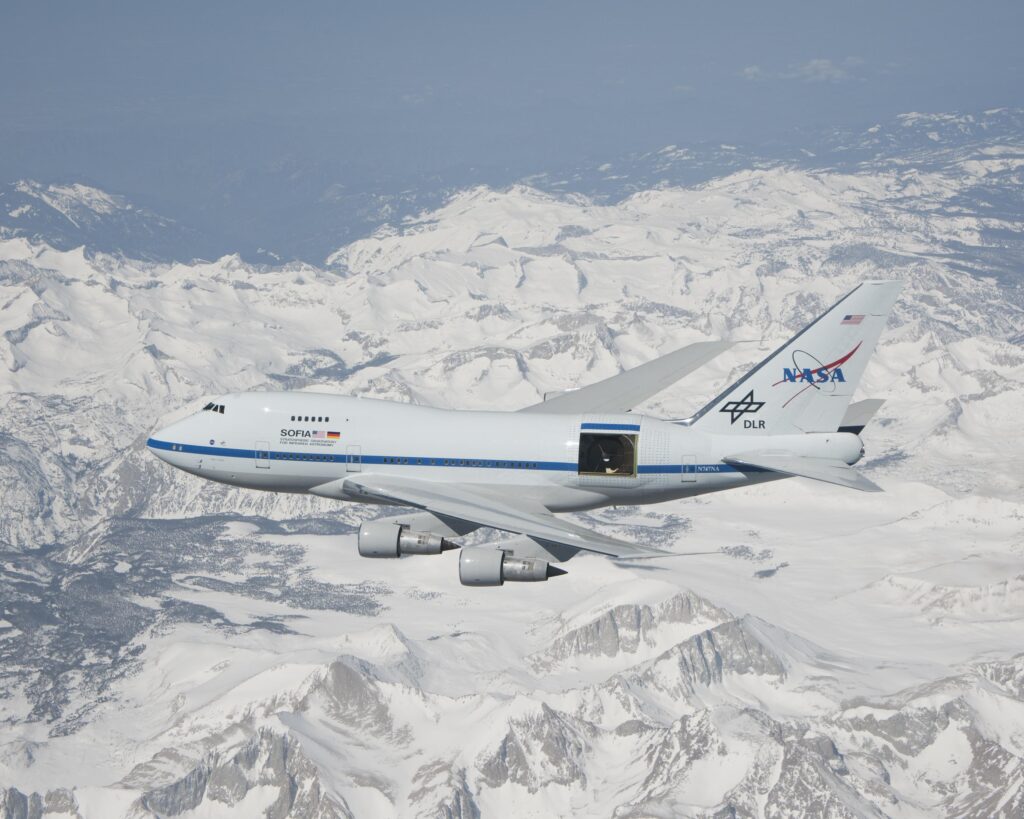
In today’s paper, the FEEDBACK legacy program on SOFIA observed ionized carbon ([CII]) emission within the Cygnus X region (one of the most active sites of high-mass star formation in the Milky Way) – observations that simply wouldn’t have been possible from the ground.
What can [CII] emission tell us?
Molecular clouds are the birth sites of stars and planets. However, the formation of such clouds embedded within the interstellar medium (ISM) of galaxies is still not well understood. Luckily, ionized carbon emission has proven to be a great tracer of molecular cloud formation and the surrounding ISM. Thanks to SOFIA, the authors of today’s paper have analyzed high resolution [CII] observations of star forming regions within Cygnus X.
Previous studies of Cygnus X have indicated that two molecular clouds (DR21 and W75N) may be colliding head-on, resulting in the formation of its high-mass star clusters. However, SOFIA’s [CII] observations indicate a different scenario, with important consequences for our understanding of star formation in the Milky Way and beyond.
A more gentle cloud formation scenario
To understand the cloud formation scenario put forward by today’s authors, we’ll first go through some of the steps of their analysis. Firstly, three [CII] maps were produced for different velocity ranges, which correspond to three different clouds (DR21 at around -3 km/s, W75N at around 9 km/s and HV at around 15 km/s in Figure 2). These maps show that most of the [CII] emission is concentrated in bright areas called photodissociation regions (PDRs). However, there is a significant amount of low-intensity [CII] emission outside these bright PDRs. There are a few nice little animations here that show how these bright clouds and PDRs are kinematically connected, i.e. they are interacting.
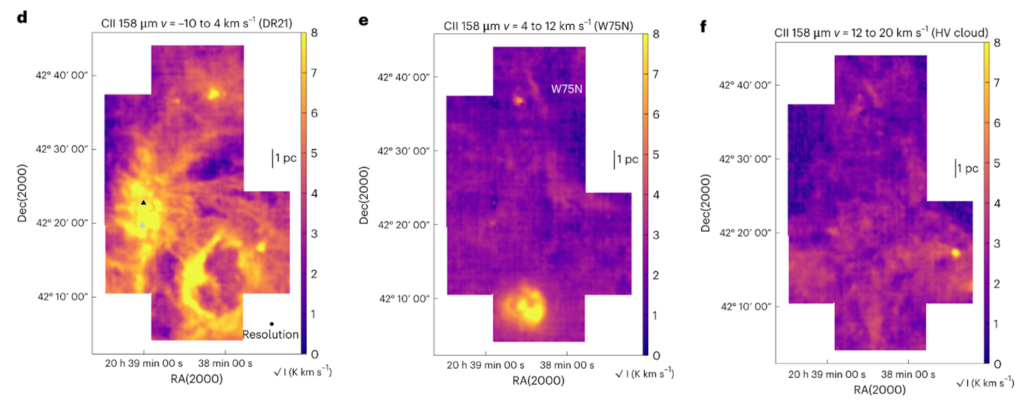
Next, the molecular fraction, density, temperature, and mass of each cloud is then estimated based on their [CII] intensities and on models of the ISM. Finally, these properties are compared with predictions based on simulations of different formation scenarios. For example, the density of the gas within these clouds is found to be ~ 100 cm^-3. In a formation scenario involving cloud-cloud collisions, we would expect much higher densities.
The physical properties of these clouds are instead more consistent with diffuse gas that is interacting. It seems that these clouds are moving towards each other and are not too far separated, so they are slightly crossing over each other. This means they are interacting mostly through their low-density gas envelopes and through small-scale flows of this gas. The authors propose that this interaction is forming progressively more and more dense clouds of molecular gas, which in turn triggers massive star formation.
Further [CII] observations of other molecular clouds in the FEEDBACK sample should soon reveal if this scenario of formation is the rule, or an exception. And soon, telescopes will be flying above the clouds again to take even more infrared and [CII] observations of the Milky Way, this time on high-altitude balloons.
Astrobite edited by Archana Aravindan
Featured image credit: NASA/Jim Ross

